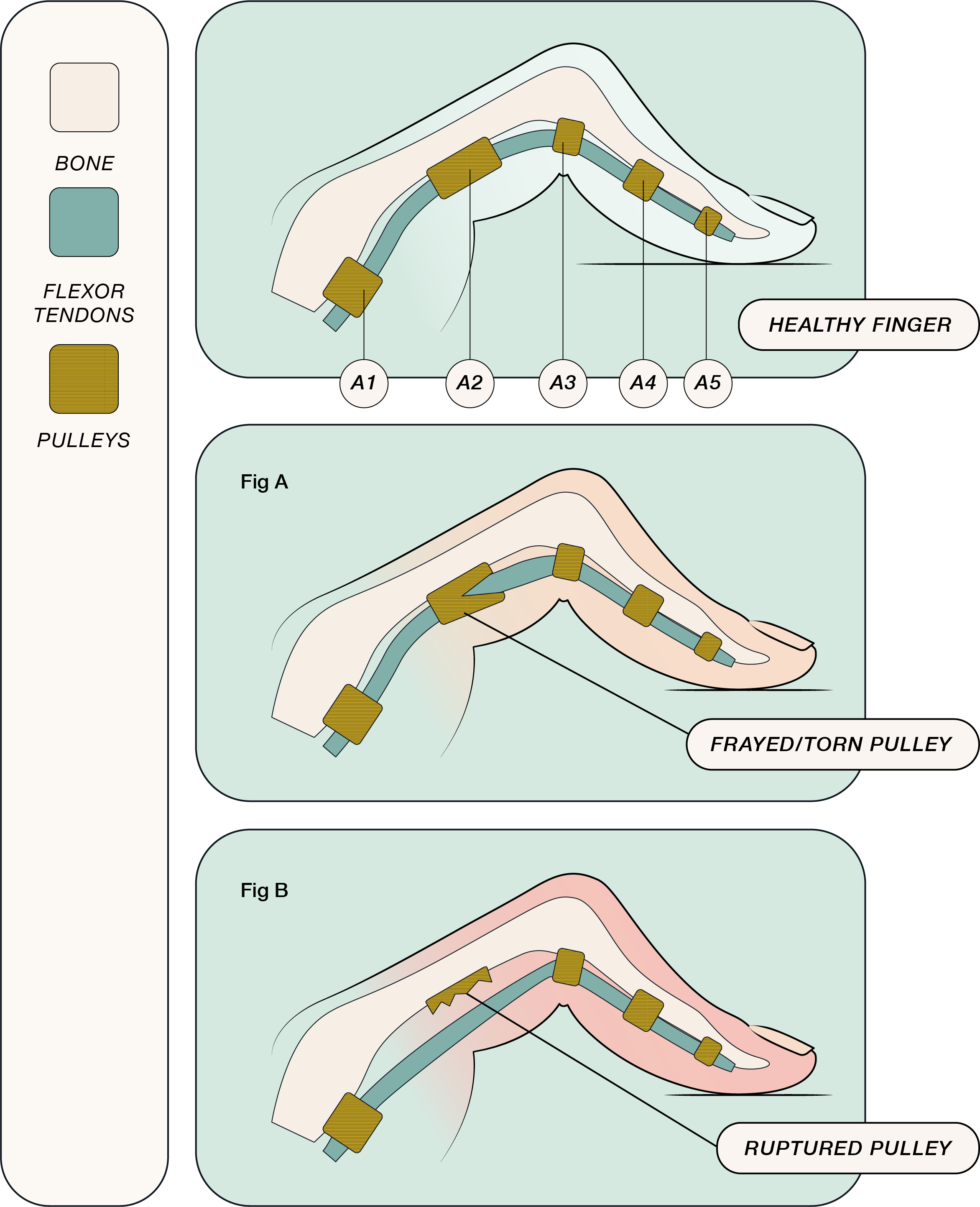Severe Pulley Strain or Rupture
A severe pulley injury or full rupture means that the pulley is either significantly frayed (Fig A) or no longer attached to the bone (Fig B). The pulley’s job is to reduce the distance between the flexor tendons and the bone of the finger. If the pulley is not attached or is severely compromised, so is this function.
This stage of recovery is characterized by giving the pulley support. This is not the time to “train” or “load” the pulley (if it isn’t connected, there’s nothing to load). The pulley needs time to re-attach, and it needs an assistive mechanism to help it reattach. This means using something like a splint that will pull the tendon to the bone.
Remember: Treating your injury correctly from the get-go will allow you to get back to climbing with full strength, and sooner. Think of it as “Short term loss, long term gain.”
TREATMENTThe absolute best thing you can do for a severe pulley injury is to have it evaluated and treated by a specialist.
We have two research-supported, conservative methods to treat a severe pulley injury: a Pulley Protection Splint (PPS) is the #1 best method. You can purchase CCDPT DIY Pulley Protection Splint Kit here, or you can have someone custom make a PPS for you. Take this article to your Hand Therapy visit.
If a PPS is unavailable, H-Tape is a less effective, but still viable, alternative. Learn how to H-Tape your finger here. (You may consider also splinting the finger straight for 1-2 weeks, but there is no data to support this method.)
Note: Moving the finger should be done with support to the pulley.
WHILE YOU WAIT TO TALK TO A PRO...Here are some tips for the meantime.
Do:
✓ Stop climbing immediately
✓ Ice the affected area to help with pain
✓ Restrict movement as much as possible
✓ Splint the affected finger, ideally with a PPS or H-tape
Don’t:
✖ Buddy tape
✖ Pen rolls
✖ Just put the finger in a pocket and start loading it
✖ Keep climbing and see how it feels

Come back stronger.
Get step-by-step instructions to get you back on the wall pain-free in 7-12 weeks.
Useful Stuff from the Blog:





How, when, and why to H-tape (and when not to!)